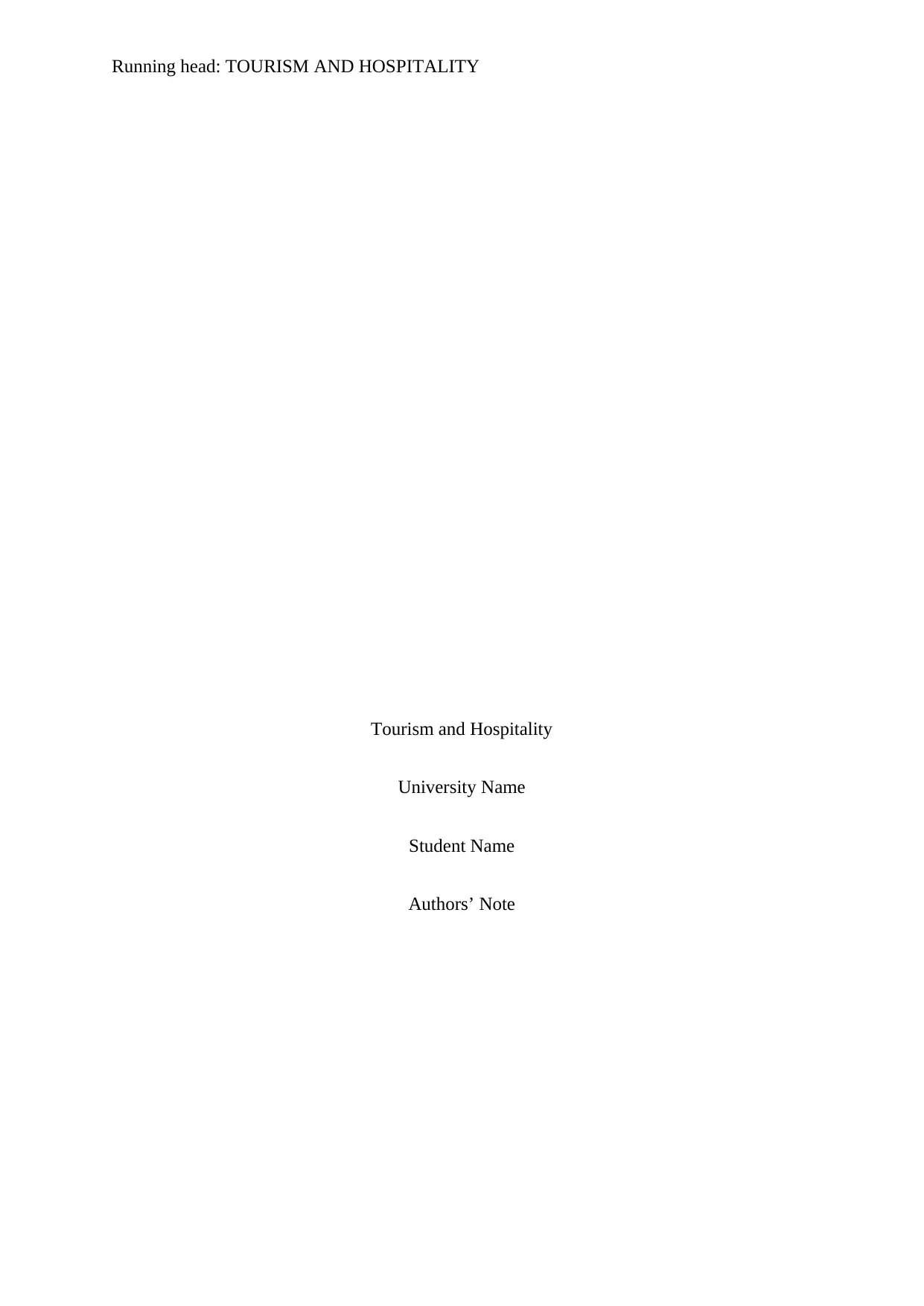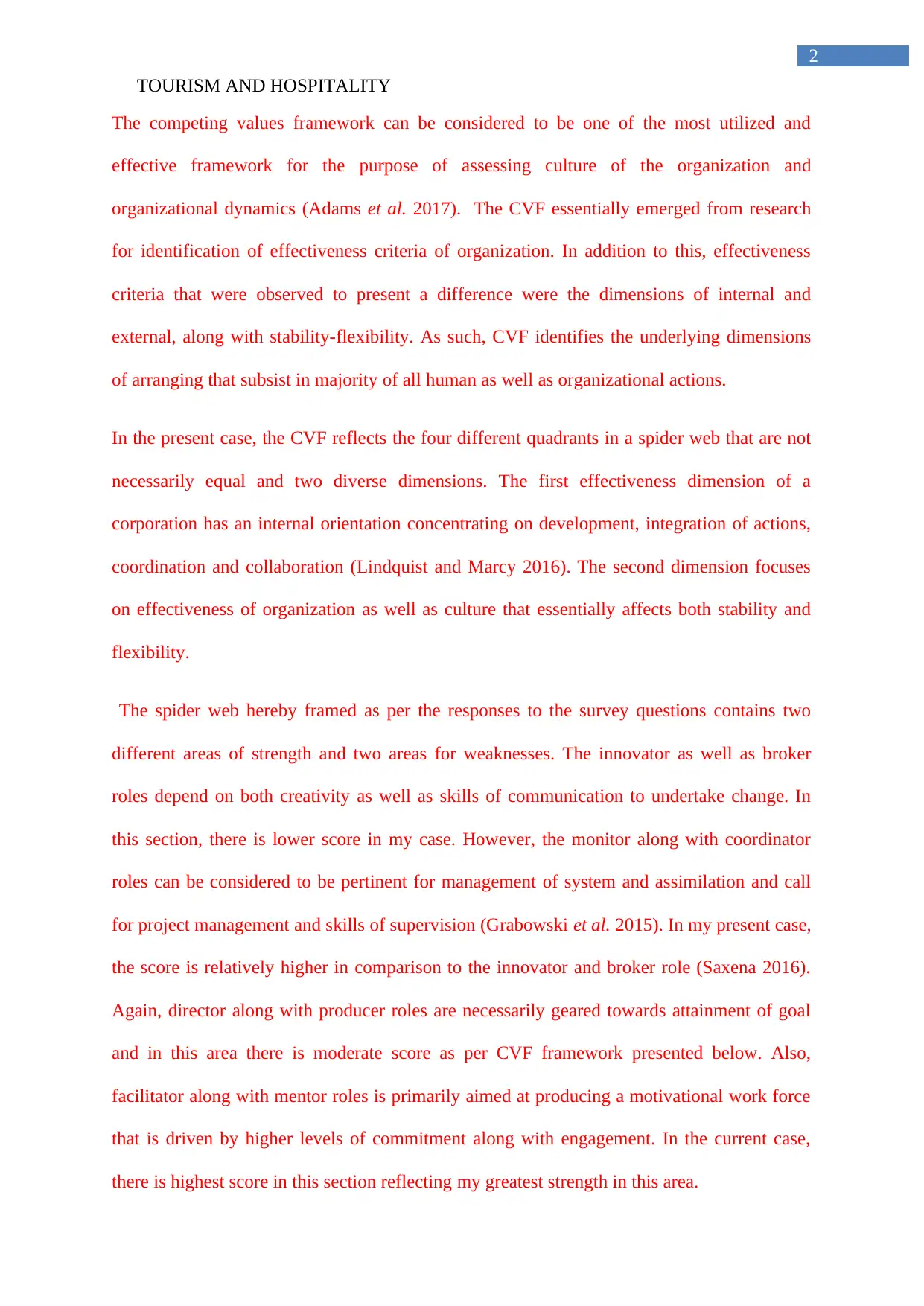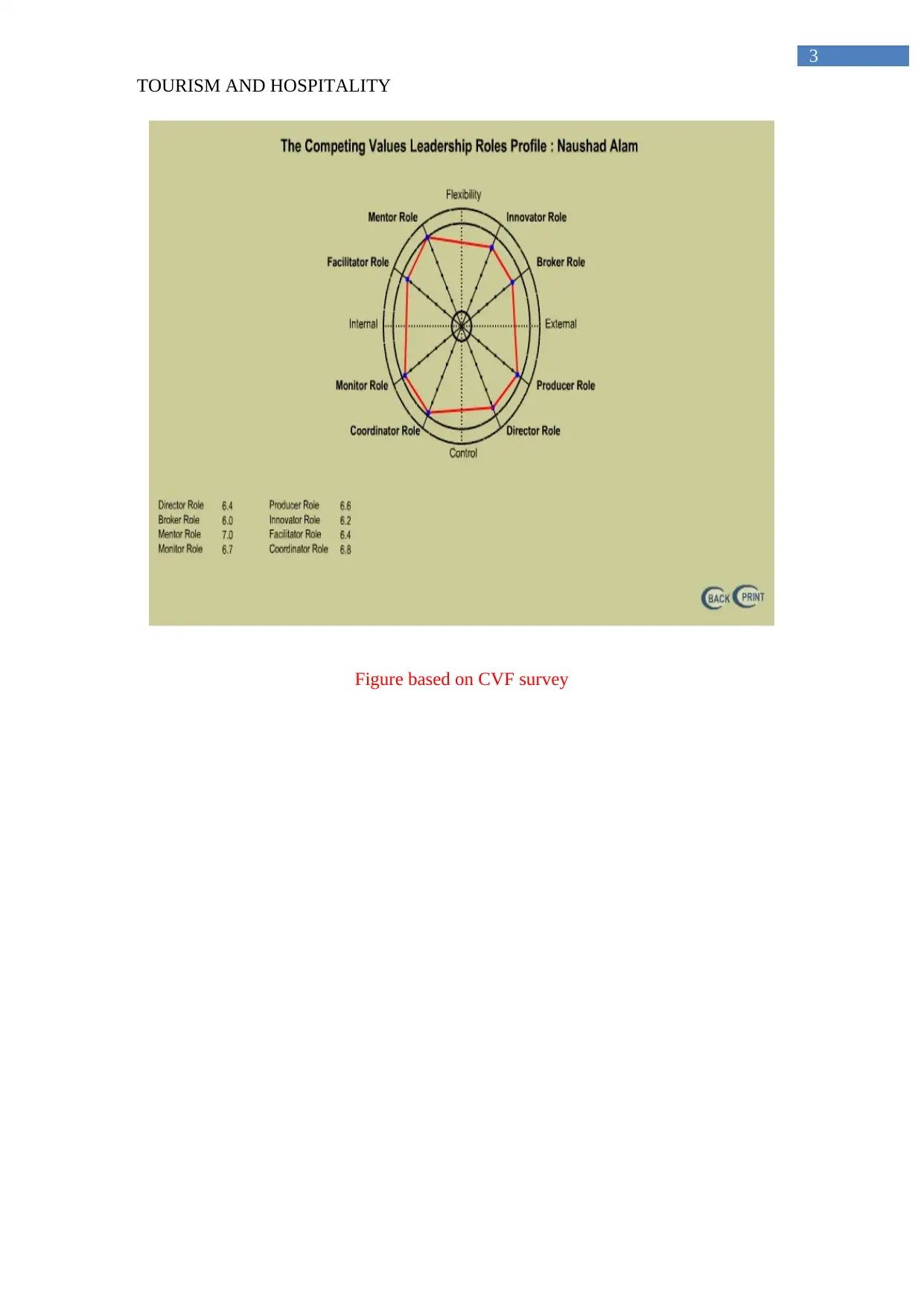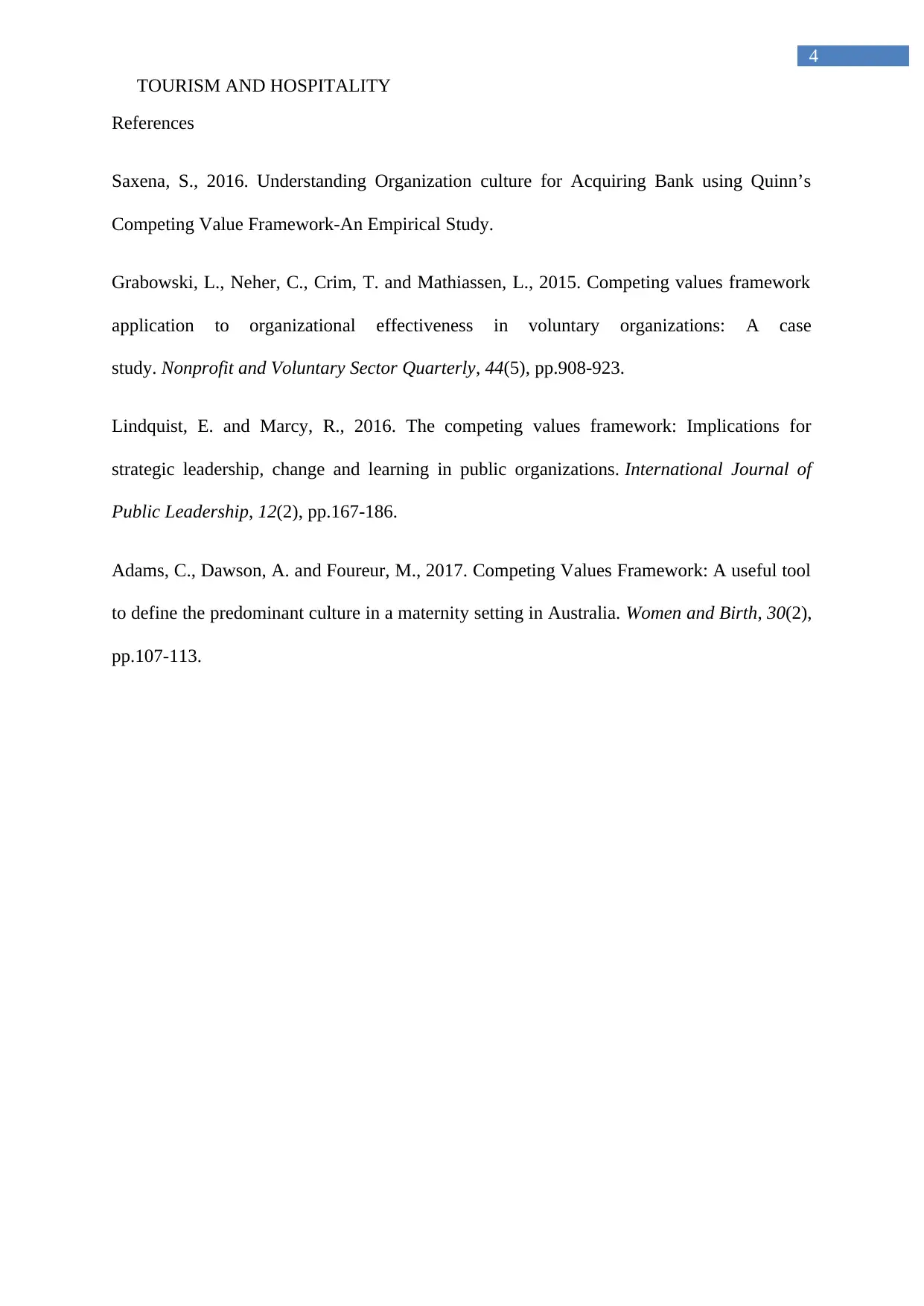Tourism and Hospitality: Competing Values Framework Analysis Report
VerifiedAdded on 2021/04/24
|4
|548
|46
Report
AI Summary
This report examines the tourism and hospitality industry through the lens of the Competing Values Framework (CVF). The report begins with an overview of the CVF, its dimensions (internal vs. external focus, and flexibility vs. stability), and its application in assessing organizational culture and effectiveness. The analysis uses the CVF to evaluate the student's strengths in various roles, including the innovator, broker, monitor, coordinator, director, producer, facilitator, and mentor roles. The report highlights the student's strengths in the facilitator and mentor roles and weaknesses in the innovator and broker roles. The report also includes references to relevant academic literature supporting the analysis and application of the CVF in organizational settings. The report concludes with an overview of the CVF framework and its applications to the tourism and hospitality industry.
1 out of 4











![[object Object]](/_next/static/media/star-bottom.7253800d.svg)